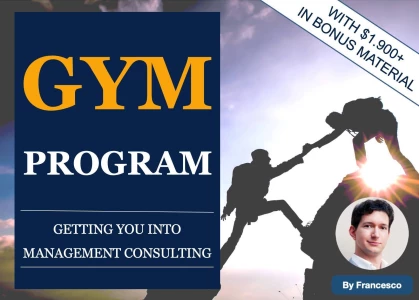Hi, this is an amazing community with so much knowledge, so thank you first of all.
I'm pretty polished in all aspects of my case-solving techniques except for exhibits interpretation and communication.
If you can please share the following:
1) what is the best practice to approach exhibits in a case interview? (i.e take time > figure out what's most important > ask for clarifications if needed > communicate findings from most important to least important). is that the best approach? do you do it in a different way?
2) How can I practice specifically on exhibit interpretation and communication? I was thinking of analyzing exhibits from random cases. any other suggestions?
Thanks again!




